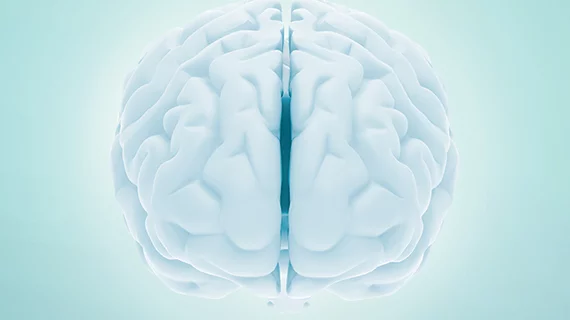PET/MRI with full head scan catches more brain abnormalities than standard protocol
It might not be the majority of hospitals’ standard routine, but including a patient’s head during routine body imaging with FDG PET/MRI could detect far more brain abnormalities than traditional practice, according to research published in the American Journal of Roentgenology.
PET/MRI has emerged as a combo modality that brings the best of both worlds—the functional tissue characterization of PET and the heightened resolution of MRI—together in one hybrid scanner, first author Ana M. Franceschi, MD, and colleagues wrote. Blending MRI into the PET formula has been “particularly useful” for assessing neoplastic diseases in the brain, head and neck, yet typical protocol mandates scanning from just the skull base to mid-thigh.
“FDG PET/MRI is a new evolving modality that is most commonly used for staging and restaging of malignancy, as well as for other indications,” Franceschi, a radiologist at NYU Medical Center in New York, and co-authors said. “The routine protocol was established to limit scanning times and reduce the amount of radiation exposure.”
At the researchers’ imaging center, they said, it’s standard to include the head in MRI/PET body imaging. They retrospectively evaluated 269 patients who had undergone such exams, looking for abnormal findings that might speak to the value of adding a brain scan to regulated procedure.
After a nuclear medicine physician and neuroradiologist both reviewed scans from the hundreds of imaging patients, taking into account abnormal FDG uptake, standardized uptake value, lesion size and MRI signal characteristics, Franceschi et al. found that nearly 14 percent had abnormal brain findings that lit up on the PET-MRI whole-body scan. According to the study, sixteen patients had vascular disease, nine had posttherapy changes and two had benign cystic lesions in the brain. Twelve patients had serious nonvascular brain abnormalities, like cerebral metastasis and pituitary adenomas.
The authors said these abnormalities can alter a patient’s course of treatment or prognosis, and scanning the brain was a process that added just three to five minutes of extra imaging time and two to three minutes of added revision time by the radiologist.
“Routine body imaging with FDG PET/MRI of the area from the skull base to the mid-thigh may miss important brain abnormalities when the head is not included,” Franceschi and colleagues wrote. “The additional brain abnormalities identified on whole-body imaging may provide added clinical value to the management of oncology patients.”

